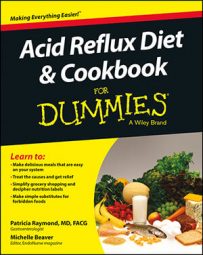An esophageal stricture is a narrowing of the esophagus due to a buildup of scar tissue. Most esophageal strictures are benign (noncancerous), but a stricture can become cancerous. Whether the stricture is cancerous or benign, it should be taken seriously because it can lead to significant health issues.
Acid reflux makes you significantly more likely to develop esophageal strictures than the average person. Acid reflux is actually the primary cause of esophageal strictures. Corrosive stomach acid can do terrible damage to the esophagus and the esophageal lining.
If you have reflux, especially GERD, your esophagus is exposed to stomach acid on a regular basis, making it easy to see why you’re more likely to incur damage. As the damage heals, it becomes scar tissue, which can lead to a narrowing of the esophageal opening around the scarring. It’s fairly common for GERD patients to develop strictures — up to 23 percent of GERD patients develop them.
Several symptoms are commonly associated with esophageal strictures. The first, and most common, is dysphagia. Dysphagia is characterized by difficulty swallowing, or feeling that food is not making it into your stomach. This is generally accompanied by pain when swallowing, regurgitation, heartburn, and unintended weight loss.
Dysphagia can prevent you from getting the proper amount of food or fluid necessary for good nutrition, potentially leading to dehydration and malnutrition. It also increases the risk of choking. Solid or dense foods can easily become lodged in the esophagus above the stricture.
The food blocking the esophagus may then contribute to pulmonary aspiration, which occurs when food or fluids from the stomach enter the lungs. This can lead to aspiration pneumonia.
Because the symptoms of stricture are commonly associated with acid reflux and some other common health problems, diagnosis usually requires medical testing. There are generally three ways physicians try to confirm an esophageal stricture:
Barium swallow test: During this test, you undergo a series of X-rays after drinking a barium solution that coats your esophagus. This allows your physician to get a clear picture of the area.
Upper endoscopy: In this case, an endoscope (a small tube with a camera) is inserted into the esophagus to look for any scarring and narrowing. This procedure allows physicians to take a sample of the damaged area and do a biopsy to determine its underlying cause. The structured area may be dilated during this procedure if necessary.
Esophageal pH monitoring: For this procedure, a specially trained nurse inserts a slender tube or probe with a pH monitor down your nose to dangle in your esophagus; the tube is left taped to your nose and face for the next 24 hours.
The pH testing results will tell your doctor lots of important information about your GERD, including whether the refluxing material is acid, bile, or neutral stomach contents; when it occurs (like after eating or when you lie down); and if the reflux episodes are associated with your symptoms.
It helps your doctor know if your chest pain, your cough, your throat clearing, or your hoarseness occur at the time of your reflux. In addition, your doctor may need to increase your antacid medications.
When a physician has confirmed your esophageal stricture, treatment will begin. The method of treatment will vary depending on the severity, as well as the underlying cause, of the stricture.
The most common treatment is esophageal dilation. During this procedure, the physician inserts an endoscope with a small, inflatable balloon into the esophagus. When the balloon is at the stricture, the doctor slowly begins to inflate the balloon, which stretches out and widens the damaged area.
Other techniques use a soft rubber dilator inserted over a guide wire that has been placed down the esophagus and into the stomach by endoscopy. Several dilators, of escalating size, will be used to bring the esophagus up to a size less likely to catch food. Repeated dilations may be required, because strictures may slowly narrow again over time.
Rarely, an esophageal stent may be required if the stricture is very tight, long, or keeps closing down. In this case, the doctor will insert a collapsed stent (think of a wire mesh Chinese finger puzzle) into the narrowed area of your esophagus while doing an upper endoscopy. The doctor will deploy the stent, allowing it to expand.
Stents are usually removed after a while, having allowed the scarred area to heal around the diameter of the stent. This will keep the area stretched out, while still allowing food and fluid to pass through. Extremely rarely, surgery may be required to remove the damaged area.
In most cases, your doctor will also recommend dietary and lifestyle changes. Because reflux is one of the primary culprits behind esophageal strictures, preventing or reducing reflux symptoms will be important. This may include some prescription medications taken to prevent or reduce reflux or GERD.
Although treatment is important and can be effective, it may not be permanent. In fact, 30 percent of patients who get esophageal dilation will have to have it done again at least two times. When you develop a stricture, you’ll likely spend the rest of your life on medication or having to make permanent changes to your lifestyle and diet.
If you take the time to address and manage your reflux early on, you can significantly reduce your chances of ever developing an esophageal stricture.

